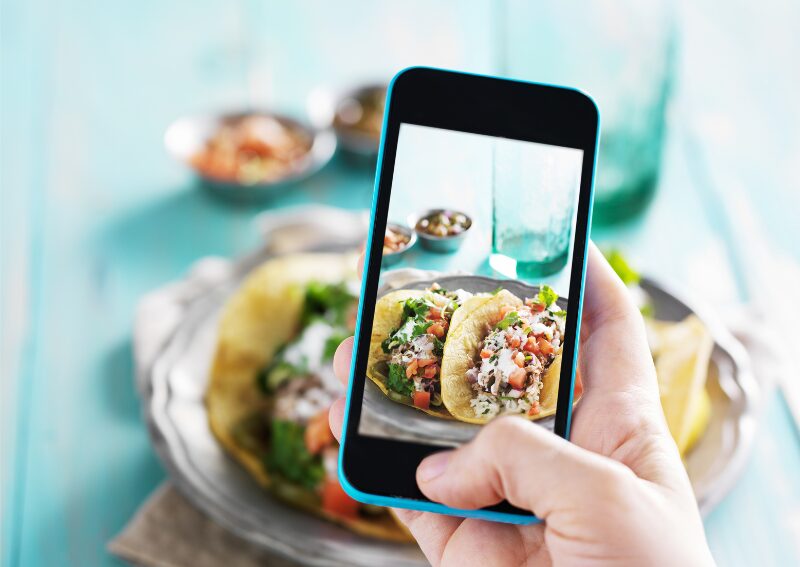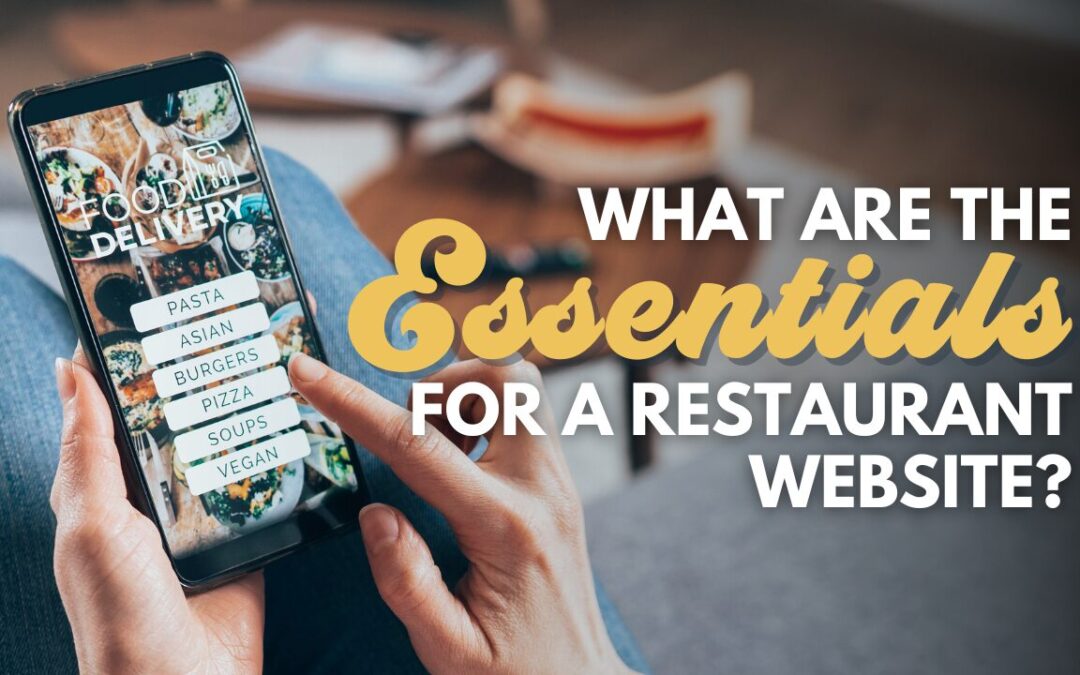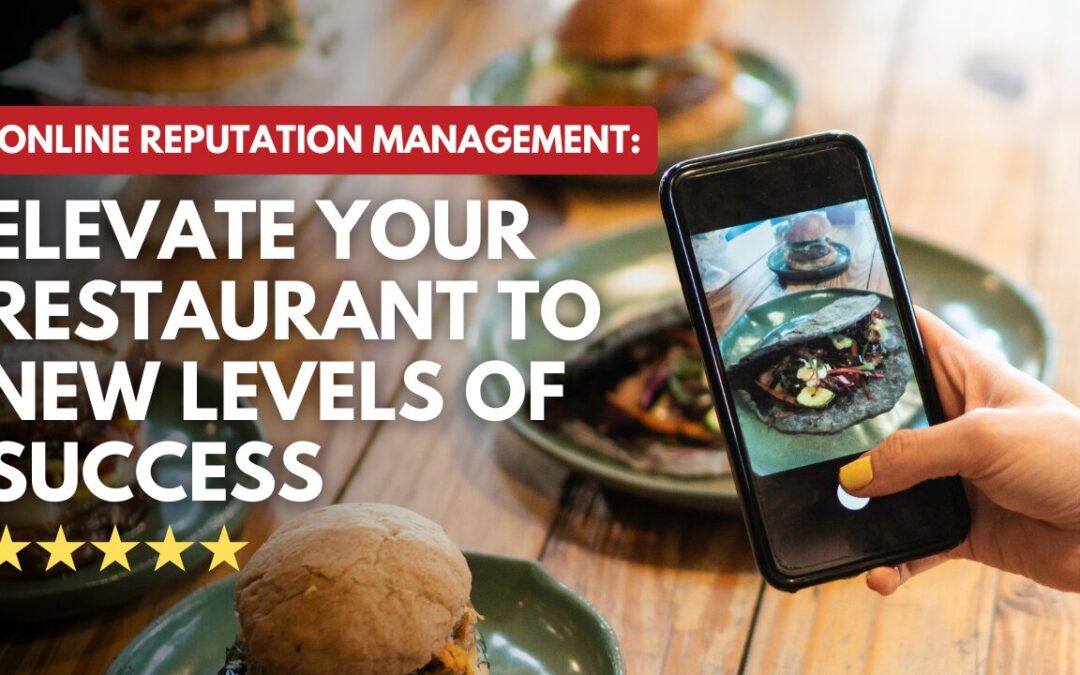Here at Country Fried Creative (CFC) we’re often asked about how to “get the word out” and “tell our story.” There’s no shortage of books, podcasts, and internet articles about marketing. We knew that the best way to answer that question was to put something together that was memorable and easy to understand for busy leaders. The most effective answer was to create something actionable and practical. We created the Journey Through Digital Marketing, a.k.a. “CFC Digital Marketing Roadmap” as a way to provide a framework for giving practical advice to our clients. This framework is a key ingredient in our highly successful marketing recipes. Let’s dive in and start with the basics.
Here’s a link to a visual guide of our Digital Marketing Roadmap (PDF)
What is marketing? Simply put, marketing is the art & science of promoting a product, service, concept, or organization. Marketing is all around us. Most people are both the source and target of marketing. We’re constantly promoting something. On another note, if someone is in business or trying to achieve a business goal, then they may also be involved in sales. Sales are those activities that lead to the sale or purchase of a product or service. Know that not all marketing involves a sale, but most sales originate with good marketing. Moreover, you have to promote something in order for someone to buy it. You need a good marketing strategy to help you!
Digital marketing is a relatively recent development in the business world. It can be defined as marketing (promotion) that uses online, digital technologies. Most people are already familiar with digital marketing because it has a persistence that is even greater than that of traditional non-digital marketing. For example, you probably carry a smartphone around with you. That phone is both the source of digital marketing messages targeting you and a tool for you to use to engage in digital marketing that is directed to your target market.
Digital marketing has many advantages over traditional marketing.
- It’s where people are at
- It’s open 24/7
- More scalable than traditional marketing
- More cost-effective than traditional marketing
- Easier to target, track, and measure results
So how do you get started with digital marketing? Storytelling! Storytelling is a fun, creative way to develop a narrative to engage your target market. For instance, a successful story is relatable, relevant, and engaging. People love stories and the heart of any successful marketing effort is storytelling. Modern storytelling often involves electronic and online channels. While traditional forms of marketing media such as radio, television, and print still exist, they’ve given way to newer online outlets.
The CFC Digital Marketing Roadmap is a journey through digital marketing, with the keyword being journey. A journey is travel or movement from one place to another. All great stories involve journeys. The process of effective digital marketing is a journey starting from where you’re at and leading to where you want to be. Everything works together on the journey to create a great story. We chose the metaphor of a roadmap for the marketing journey because it’s something relatable. Most people use a map (or a digital equivalent) to get from one point to another in an efficient, effective manner. The journey can begin at any point on the roadmap, but for sake of explanation, we’re going to explain it from the start.
So what is the CFC Digital Marketing Roadmap? You can think of the roadmap as a series of actions:
- Starts with BRANDING – Logo & Website
- Increase AWARENESS – Social media
- Get FOUND – SEO / SEM
- REINFORCE message – Email marketing
- ENGAGE customers – Content marketing
- MAINTAIN awareness – Advertising
- DEVELOP brand – Print / Promotional
- MEASURE success – Analytics
Let’s take each stop along the roadmap one at a time.
Branding
A brand is a name, design, or feature that identifies your organization. A great brand involves a style, vibe, or feeling associated with a person, place, or thing. A brand is what comes to mind when people talk about a product, service, or company. How you want your organization to be regarded by others (e.g. reputation) is branding. A brand has the power to attract or detract an audience. Logos and websites manifest branding most directly.
Brand = Identity (who you are) + Image (how you want to be seen)
A successful digital marketing campaign begins with a brand and successful branding is a process. The CFC branding process involves four key action items:
- Research Market – competition, company, services/product
- Develop Identity – messaging, attributes, personality, tone of the brand
- Design Logo – graphic design, logo, typefaces, colors, brand guide
- Create Website – web design, layout, functionality, support structure
Much has been said about branding and we’ll write more about our branding process in a future piece. The aim of this article is to keep things simple. Let’s focus on two important manifestations of your brand which are at the very top of the digital marketing roadmap:
the logo and website.
Your logo communicates your company message in one image. It’s perhaps the most important reflection of your branding. A logo immediately communicates your identity and image. We encourage clients to invest in a quality logo and avoid the temptation to put together something cheap. A logo doesn’t have to be expensive, but it should be uniquely identifiable as your own. All other components of a marketing program should be based on a quality logo. The logo is the tie that binds together your website, social media accounts, promotional items, packaging, and letterhead. If you’re going to spend money on effective marketing, start with a high-quality logo.
Your website should be an extension of your logo and the basis of your web presence. A website is the only representation of your organization that you can fully control on the Internet. Every other digital channel is subject to algorithms and rules which control what’s seen and by whom. A great website serves as a 24/7 promotion engine for your business or organization. A bad website might cause a customer to think twice and go somewhere else. There are three main components to a great website.
- Visual – The first thing that catches a customer’s eye is the visuals – pictures, layout, style. It’s important that your website captures attention quickly.
- Functionality – Most users come to a website to find something or do something. Your website needs to be accurate, efficient, and effective.
- Content – Content is still king and it’s how your website is found on search engines and what causes your customer to take action.
So, the starting point of the CFC Digital Marketing Roadmap is branding, especially as expressed in your logo and website. Once established, you can expand the market awareness of your brand with social media.
Social Media
Social media has revolutionized marketing. Never before has there been a way to have a cost-effective, two-way conversation with your target market. Media by itself is one-way. The “social” part of “social media” implies conversation and engagement. Social media can be used to great effect to increase brand awareness and foster important dialog with your customers. At the time of this article, the most important social media channels for most businesses and organizations are: Facebook, Instagram, LinkedIn, Twitter, and YouTube. A future article will do a deeper dive into each of those marketing channels.
What makes social media unique and an important part of your marketing journey include the following:
- Instant – no need to wait for publication, you can use social media for instant communications
- Engaging – the “social” part means that it’s a two-way system for engaging your audience
- Cost-Effective – whether you do-it-yourself or hire an expert, social media is very inexpensive marketing
- Measurable – unlike print advertising, social media can be measured with analytics
Social media management involves two types of content posts – organic and sponsored. Organic posts are short blurbs that involve a visually captivating image and relevant written copy to promote an idea, emotion, event, news, or call-to-action. Organic posts are shown in a social media “feed” according to rules and algorithms established by the social media channel. In order to guarantee that your posts are seen by your target market, consider sponsored posts. A sponsored post allows the marketer to pay a small sum of money, select a very specific target demographic, and guarantee that your post is seen by the targeted audience. Traditional media sponsors rely on a “shotgun” approach in which the marketer doesn’t really know who’s seeing the promotion. Social media sponsorships give the marketer a “laser beam” approach to dial-in very specific targets and track them.
Both organic and sponsored social media posts should draw your target audience back to your website. Another way to do that is with SEO (organic search) and SEM (paid search), which is our next stop on the digital marketing roadmap.
Search Engine Optimization (SEO) / Search Engine Marketing (SEM)
When someone is looking for something (a place to eat, what to watch, business services, etc.) they typically pull out a smartphone and do an internet search. The internet has effectively replaced phone books (remember those?), print newspapers, driving maps, encyclopedias, and other forms of information.
Search Engine Optimization (SEO) is focused on organic techniques that allow your organization to be found on the internet. There are no shortages of so-called experts on how SEO works. Be wary of anyone who promises top search engine placement. The search engine companies themselves aren’t in total control of the results, just the rules. The leader in search technology is Google and most companies should focus their efforts on optimizing that. Google itself is pretty transparent about how to rank well on search results, since it’s in their best interests that people find relevant content.
Here are some quick wins to optimize your search engine ranking, particularly in a local market.
- Google My Business – Google’s online business directory, tied to it’s mapping product. This is the single most effective way to be found, make sure your listing is current!
- Website Optimization – Make sure your website is search engine friendly, has structured content, and doesn’t have broken links.
- Social Media Presence – In addition to helping your market, social media channels are indexed and part of your online reputation.
- Online Reputation & Reviews – Keep tabs on what people are saying about you online. Respond to concerns and ask good customers for positive reviews.
- Business Directories – Being listed in industry and community directories allows a broader audience to know about you. Search engines index directories.
- Links – Link to other websites and ask them to link to you – customers, vendors, resources. The world wide web (WWW) was built on linking.
- Other Factors – Site speed, your physical location, mobile-friendly websites, sitemap, and relevance all factor into your SEO
Search Engine Marketing (SEM) is paid search engine promotions (sometimes called Pay-Per-Click PPC or Pay-Per-View PPV) that allow your firm to stand out during internet searches. SEM puts you at the top of the Search Engine Results Page (SERP). Remember this, Google (and others) make money through paid promotions, not organic search. The top search engine results are always going to be paid placements.
Here are some general considerations for SEO / SEM applicable to most businesses and organizations.
- Optimization – Develop content that answers questions customers are likely to ask
- Directories – Google, Google Places, Yelp, Chamber of Commerce, and other listings
- Organic Search (SEO) – You should use on-site and off-site content and links to get found.
- Paid Search (SEM) – Modern ad campaigns leveraging internet technologies for advertising
Email Marketing
The next stop on the marketing roadmap is email – yes email! One of the best ways to reinforce your marketing message is with targeted emails. It is the most direct and cost-effective way to maintain a “push” marketing campaign and keep in touch with your target market. Capturing email addresses and contact information for your customers and managing them in a database allows you to better define who you’re working with. Effective email marketing is not spam, it’s a personal way to engage your customers. Advanced email marketing can be tied to marketing automation that follows up automatically based on certain criteria, which is especially effective for e-commerce. Basic email strategies should be part of any effective marketing program. Here are some examples of email marketing content:
- Updates – Let your customers know what’s going on with their market, your firm, your services.
- Promotions – Develop loyalty with specials, sales, cross-selling, up-selling.
- Tips – Push out helpful information so the customer doesn’t have to look for it.
- Calls To Action – Asking for donations, volunteers, sign-ups, appointments, visits, reviews are as simple as asking for it.
Of course, effective email marketing is based on great content – our next stop on the roadmap.
Content Marketing
Content is still “king” in the world of marketing. By content, we mean “words” and “pictures” that tell a story to inspire your target market to engage and take action. Create a content strategy that engages across a spectrum of marketing channels – social media, website landing pages, blogs, videos, custom graphics, and more. Avoid stock content, unless it’s absolutely necessary. Custom content reinforces your branding. Here are some tips with regards to content marketing.
- Variety – Use a wide variety of mediums to stimulate customer engagement.
- Story – Everyone loves a good story, tell one with quality content that invites a next step.
- Push Content – Use social media and email to push out content and get noticed.
- Pull Content – Develop SEO-friendly content so that it pulls in attention from directories and search engines.
In developing a content strategy, consider the development of cornerstone content that can serve as a basis for consistent marketing. A video and a blog post are cornerstone content that is then subdivided into smaller segments. Social media, email blasts, and print media then push out these segments in “bite sizes”. This article that you’re reading now is a blog post that serves as cornerstone content for Country Fried Creative. Once you have a great story to tell and great content to tell that story, the challenge is to get it in front of a large audience. There’s no better way to get a message out to a large audience than advertising.
Advertising
Most all of us are familiar with advertising through paid promotions. What’s relatively new is the concept of digital advertising. The digital marketing world has effected advertising in two ways– (1) it lowered the cost of promotions (compared to traditional media) and (2) made advertising effectiveness easier to track. Advertising amplifies your marketing message to a large audience. It fills in the gaps of your marketing strategy by serving as a constant reminder that you’re out there. Here are some tips to make the most of advertising.
- Digital Ads – Use these on sites that your customers are likely to visit as reminders of who you are.
- Paid Search – Most search results have paid listings at the top of them (sometimes called Pay-Per-Click PPC).
- Social Ads – Stand out in a crowded market with paid or sponsored posts on social media platforms.
- Print / Media – Customers aren’t always in front of a computer or on their phone. Yes, there’s still a place for traditional, non-digital advertising.
The key to effective advertising requires consistency in message and ad spend. Spending money to create great content is important, but you’ll need advertising to get it out there to a large audience and keep it there. Another way to keep your marketing message alive is through traditional marketing outlets such as print and promotional activities.
Print / Promotional
Traditional marketing items are still relevant in the digital world. People still like to hold tangible things in their hands other than a smartphone. The best marketers ensure that their digital and traditional marketing activities are consistent using the same logo and message. Some examples of print and promotional action items:
- Stationary – Most people like to get mail other than bills. Communicate a professional image with branded print items.
- Hand-Outs – Business cards, flyers, brochures, and fact sheets help communicate very specific information.
- Posters – Help keep your brand prominent in high visibility locations.
- Promotional Items – Everyone loves free stuff, use branded promotional items and gifts to be memorable.
Even though we’re a digital marketing firm, here at Country Fried Creative we use traditional marketing ourselves. Twice a year we design and give out company t-shirts and apparel to our employees and customers. We also run contests and giveaways with pens, coffee cups, buttons, stickers, and other trinkets. I personally send out thank you cards to clients on special occasions. We have print marketing brochures, including a menu (styled like a restaurant menu), that we can hand out in person or electronically (click here to see it). In fact, one might make the case that a hand-written note or gift stands out even more in a digital world where everything is intangible and temporal. Marketing should be a good mix of digital and traditional, based on your target audience and budget.
It’s hard to manage what you can’t measure, so the last stop on our digital marketing journey has to do with analytics.
Analytics
A sound business plan should include a marketing strategy that is based on a budget and specific, measurable goals. Although marketing is largely a creative endeavor, it has to be grounded in numbers. Measuring marketing effectiveness is more than just sales. You can think of the digital marketing journey along with the roadmap as a funnel that guides your customers to action – which may be a sale, donation, sign-up, registration, quote, or some other activity.
Digital marketing is unique in that you can keep track of the numbers along the way, so as to make your marketing more effective. All forms of digital marketing provide metrics – clicks, views, likes, shares, etc. In a future blog post, we’ll explore the subject of analytics in greater detail. Because almost all marketing programs use a website (since it’s a key component of your brand), we’ll focus on web analytics.
There are four major categories of website analytics that one should be concerned with:
- Audience – Who are your visitors, how many do you have, where do they come from?
- Acquisition – Where customers are coming from: organic search, direct hits, referrals, and social media.
- Behavior – What customers are doing on your website and how long they are staying.
- Landing Pages – What pages customers are visiting and what search terms brought them there.
It’s surprising to me how many businesses (even large businesses and organizations) have no idea how many people go to their website, who they are, or what they’re reading. All web servers keep up with metrics and analytics. Before starting a digital marketing program, it’s important to establish a baseline. If you’re going to spend money on digital advertising to drive people to your website, it’s helpful to see an increase in web traffic. Just remember, you can’t manage what you can’t measure. Digital marketing gives you considerable marketing insight that’s never been available before in traditional marketing.
In summary, our Country Fried approach to managing marketing is the CFC Digital Marketing Roadmap.
The digital marketing roadmap takes clients on a journey that involves storytelling and targeted activities that are relevant and measurable. Not sure where to start? Begin the journey at the start – with your brand. Take a look at your brand. What are people saying about your organization? What do you want them to know about your company? Structure your plan around your branding. You can fine-tune the activities and message as you go along. The most important part of the journey is to take the first step and start.
We’re here to help you.
Joe




